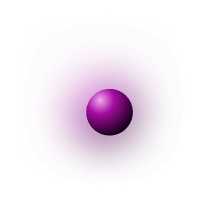

Industry
Any industry enterprise contains thousands of procedures that must be done in accordance with strict regulations. Any mistake leads to enormous financial losses, so companies spend fortunes on building a competent system for testing and servicing equipment. Augmented and virtual reality technologies allow you to simulate any situation, provide the necessary information and train people any work without risk of closing down all production and harming the health of employees. That is why these technologies are so actively implemented in top world companies.
Augmented Reality in Industry
Emalytics by Phoenix Contact
The company develops integrated industrial solutions that combine data from all production into a single database. Each workplace and equipment have special devices that transmit data on their work and performance to the control center. Using augmented reality, this data is reproduced in the right place at the right time, providing up-to-date data. The system helps industrial and construction companies to optimize production processes and reduce the number and frequency of errors.
Airbus Mixed Reality
Airbus is one of the leaders in aerospace technologies, a leading manufacturer of commercial and military aircraft, and a pioneer in the use of augmented and mixed reality technologies in its production process in order to increase the quality of its products and increase safety. Using mixed reality glasses allows you to obtain the necessary information during the installation of complex units, and high-quality rendering provides visualization of any of the most incredible engineering ideas. Thanks to the use of immersive technologies, the company plans to reduce testing time by 80% and speed up the implementation of complex tasks during assembly by 30%.
Industry 4.0
An unusual solution from SCS Concept Group, combining augmented reality and projectors, allowing the technician to assemble complex technical elements, reducing the possibility of error occurrence. Each step is literally illuminated and the specialist sees what he needs to do next. After the assembling, the system checks the operation and reports this to the person.
Object recognition by PTC
PTC, one of the leading developers and researchers of augmented reality technology, actively collaborates with large industrial enterprises creating innovative products. Object recognition is one of the research directions of PTC. Any object can become an augmented reality marker, and high-quality animation allows you to show the components of any object.
Toyota AR Demo
Car manufacturing companies have long been using augmented reality for their production and marketing purposes. Toyota used this technology to show the construction of its car at a European exhibition.
Virtual Reality in Industry
NVIDIA Holodeck
Nvidia, a leader in visual computing, has developed an all-purpose virtual environment in which teams can interact with each other and collaboratively create solutions. The Holodeck development environment allows you to create virtual rooms, invite your colleagues and work, regardless of the participants’ actual location. The program allows you to work with various 3D models formats and maintain voice communication with all participants.
McLaren Design
Car manufacturing company uses virtual reality to visualize creative solutions for creating the design of their cars. When every millimeter matters, when it is necessary to balance between an ideal design and power, when you need to transfer an idea to a real environment as quickly as possible, virtual reality becomes an indispensable solution. The app provides a whole range of possibilities, starting from the automatic transformation of 2D objects into 3D objects and ending with high-quality rendering of the final model.
VR trainings
Any construction or industrial facility is associated with danger, so world leaders spend billions of dollars on ensuring the safety of their employees, creating training centers and evaluating actions based on tests and exams. The one-time development of extreme situations simulation in virtual reality, despite its high cost, is the most effective way to increase the level of knowledge and reduce unforeseen situations in the workplace. The developed solution can be used to train all employees without specialists, and situations can develop from simple ones to really unpredictable.
Conclusion
Nowadays, industry is becoming an important consumer of virtual and augmented reality technologies. All global manufacturers are investing in developments in this direction, creating new solutions and approaching the near future, when immersion technologies become ordinary everyday things like mobile communications.



